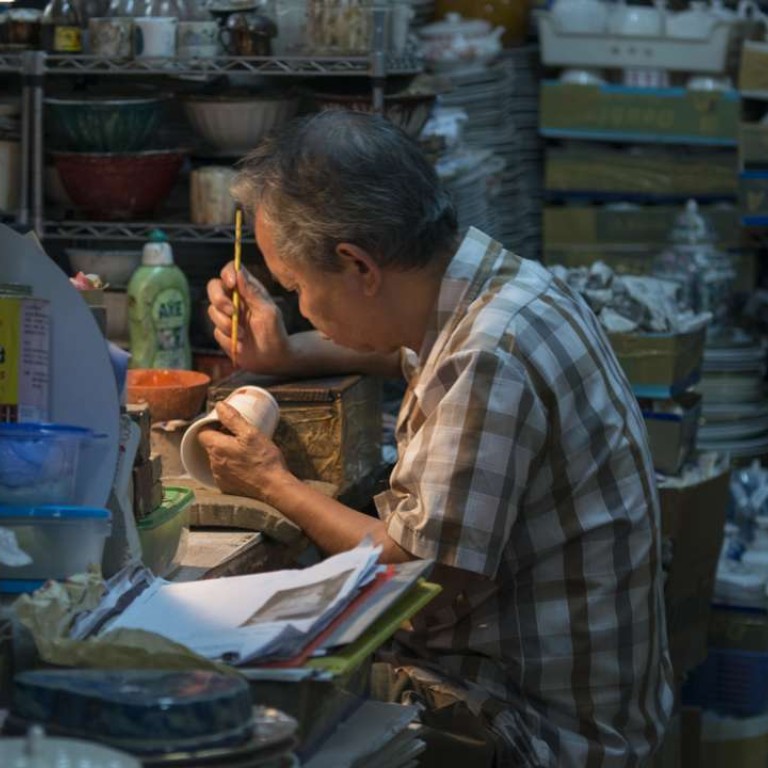
Hong Kong’s best-kept secrets: hand-painted porcelain goods
It was the city’s first factory of its kind and made porcelain for film stars and luxury hotels, but with no one to take it over, sadly it could be the end of the city’s Guang Cai industry
Wandering between the shelves in Yuet Tung China Works in Kowloon Bay Industrial Centre, it’s easy to get dazzled by the porcelain wares stacked from floor to ceiling in four showrooms. Three craftsmen sitting between piles of ceramics are pigmenting outlined vases with their wrinkled hands.
Hong Kong’s first hand-painted porcelain factory, it was established in 1928. A hidden treasure trove, the factory produces ginger jars, vases, dishes, cups and plant pots. Tso Chi-chung, the manager of the company, is the fourth generation to run the factory. “I’m the last generation. There is no one in Hong Kong we can hand it down to,” he says.
The company specialises in “Guang Cai”, the colourized ceramics from Guangzhou, which can be traced back to the rise of foreign trade during the Qing Dynasty, and counts among its clients several of the city’s five-star hotels. The ceramics are known for their sharp colours, precise geometry and refined drawings portraying an array of Chinese folktales.

Born in Guangzhou, Tso came to Hong Kong with his father in 1956 to continue the business. “I spent my whole life in the factory. When I was young, the factory was set up on the mountain. It was like a small village. The craftsmen ate and lived together in the factory,” says the 67-year-old. “We never complained even after working for 12 hours straight. That was Hong Kong’s ‘Lion Rock spirit’.”

“At that time, there were more than 1,000 craftsmen in Hong Kong. It was the peak of the industry. But now of the four craftsmen remaining here, only Mr Tam knows all the techniques.”
Apart from the traditional patterns, they try to cater to overseas customers by mixing Western tales, landscapes and brand logos into their works. Unlike mass-produced pieces, hand-drawn lines appear thinner and smoother.
“We are basically making all kinds of porcelain now. I call them Hong Kong ceramics. We have also simplified the technique to save manpower and materials,” says Tso.

The family’s next generation has stepped out of the small factory. His son studied at Hong Kong University and is now a dentist in Hong Kong, “They are not interested. The young generation is seldom willing to get their hands dirty and sit patiently in front of a table.”

In recent years, six local girls started a collaboration with Yuet Tung China Works and founded Chihei, a company aimed at promoting Guang Cai. They held a workshop last year to let the public design their own ceramic wares. “Making handicrafts used to be a survival tool,” says Tso. “But now young people learn it as a hobby.”
